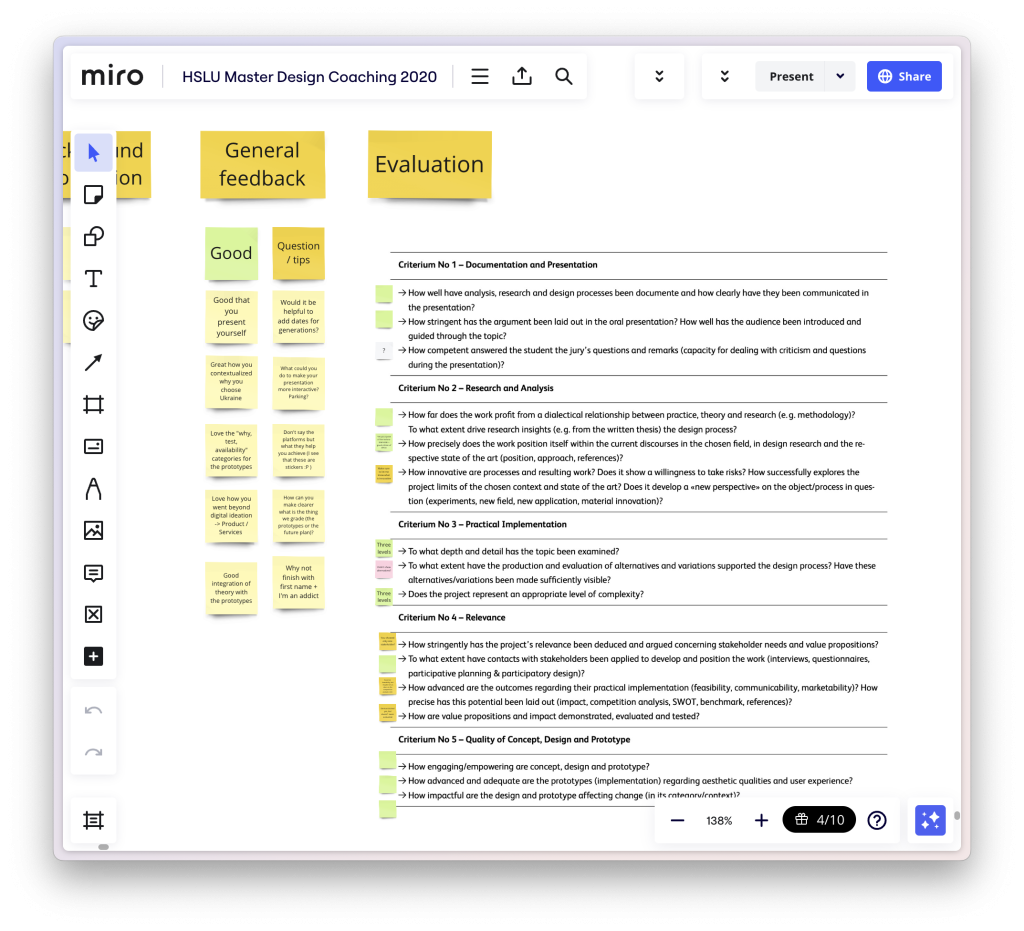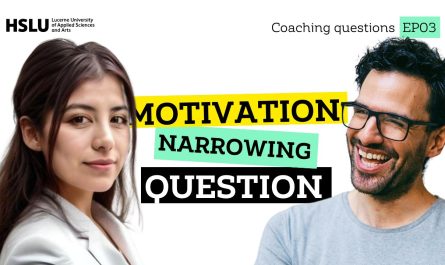In this article I will share with you 5 practical tips you can implement to improve the chances that the project you spend days, months and even years working on lands well with the people who evaluate it. Even if you suck at making slides, storytelling or selling yourself. These tips are focused on students in a master program but they can easily apply to the professional world too.
In summary
- Know the evaluation criteria
- Use the evaluation criteria as a checkin tool
- Dry run your presentation dozen of times
- Test the presentation with your evaluators
- Do some healthy and transparent lobbying
- Bonus one: Respect the deadlines and timing
Why now
As I’m writing this article, I’m in the train coming back from hours of listening to final diploma presentations of the students from the Master Design of the HSLU.
There were some great presentations and I want to share here a few ingredients that I think helped make these presentation a success.
I’m sharing these tips here to help next year students and people outside of the program benefit from these learnings
The tips in detail
For these tips I’m not focused on how to make the slides of a presentation, that’s something that today is pretty easily solved with templates (hello Canva), help from peers or even freelancers.
Tip 1: Know the evaluation criteria
Most of the times, both in studies and in professional work their are clear expectations. These expectations can take the form of a briefing or contract (in the professional world) or a list of evaluation criteria (in the academic world).
As the people who evaluate your work (a client, a boss, or a teacher) will use these tools to make sure that you delivered what was expected these tools should be essential.
You should:
- Have access to them
- Know them in details
- Have asked questions about how they are used
In a previous article I’ve talked about How do we grade academic work within the master Service Design of the HSLU? In it I showed that in the academic world and especially in the Master Design of the HSLU:
- Evaluation criteria are given at the start of the projects
- The same exact criteria are used by teachers and experts
Tip 2: Use the evaluation criteria as a checkin tool
Many people working in the design world are used to principles and critieria that can help check the quality of the work as we are doing the work (like the 10 Usability Heuristics for User Interface Design by Jakob Nielsen or the 15 Principles of Good Service Design by Lou Downe).
Instead of waiting the end of the project to evaluate how good it is, the evaluation criteria given at the start of the project can be used every month or during each coaching session to see where there is the biggest blind spot that needs more attention and love.

I’ve seen smart students do that even alone and don’t wait for a coach or teacher to do a mid-project evaluation. That’s why in the future, as a coach in the master Service Design program, I’ll push more students to do these self evaluations.
Tip 3: Dry run your presentation dozen of times
When we look at a comedian we feel: wow this guy is naturally funny. What we don’t see is that before this comedian did a big show in front of hundreds of people, he tested his material in tiny cafés, cut elements, reworked them for a very long time. Comedians know that to land a perfect joke you have to get everything right, timing, content, expression, etc. And they test that over and over.
That’s why it’s smart to do dozens of dry run presentations. These are presentations that have low stakes: they can be done:
- Alone just recording yourself with a camera
- With family members and friends who know nothing about your work
- With peers (work colleagues, other students)
Back in the days when I worked as a consultant, with my mate and partner in crime Patrizia Lamprecht we had a rule of thumb for our pitch presentations:
Each time we do a mistake in the dry run, with fix the issue and start over from the beginning.
This meant that we repeated a pitch up to the moment it felt like a theater piece we knew by heart. We improved every detail in the presentation. And to the audience it felt effortless as we were some kid of wizards.
This is a simple piece of advice, but one that gets overlooked so often. And one that makes a huge difference in feeling comfortable when presenting your work.
Tip 4: Test the presentation with your evaluators multiple times
Whenever you’re working with other humans lobbying and politics are part of the game. So it’s smart to not only test your presentation alone, with friends and peers but also to do it with the people that will evaluate you. And don’t stop there, engage with these people (when allowed in the rules as in some case you might be allowed to engage in advance with a supervisor but not the outside expert).
Why should you do dry runs with your evaluators?
- They will be the ones grading you, so it’s smart to know how they think. In some way they are one of your clients.
- It helps you adresse all the critical things during your presentation, so that during the question time people don’t have to try to save your presentation by asking question so that you reveal the information they need to grade you well. This makes then the question time after your presentation more interesting.
- It’s easier to evaluate something that you don’t discover for the first time and that you have seen progress over time
Tip 5: Do some healthy and transparent lobbying
Asking your evaluator to do a dry run of your presentation is just the first part of your political and lobbying playbook. Which again works perfectly also in the professional world.
Make sure that you understand the viewpoint, needs, etc. of your evaluator. How do you do that? Ask questions, ask to spend time around a coffee to discuss your profession. Show curiosity and interest.
It’s hard to evaluate curiosity and interest in a 20 minute presentation. It’s much easier to do it when you’ve already met the person before.
Bonus tip: Respect the deadlines and timing
This might be a Swiss cultural aspect but respecting deadlines and timing will help put your evaluators in the right mood.
As someone who has to evaluate diploma presentations, I read them in detail in advance and take detailled notes in advance. So that during the presentation I’m not trying to understand but I’m deepening my understanding.
This means that as a student you have to respect the deadline for submitting your PDF presentation. If you don’t:
- As the person who grades you, I come unprepared
- During your presentation I’ll have to spend a lot of energy in my note taking instead of only listening (because it’s required that evaluators justify and comment the grades).
- It’s making me feel less respected as you didn’t respect the rules and made my life harder
The same goes with respecting the time you have to present orally. Make sure to even finish earlier than the time you have. This ensures that:
- As the person who grades you, I feel I have enough time to ask you questions
- I don’t feel rushed or frustrated because there was no time to ask you a question
- You and me aren’t frustrated because you couldn’t show everything you wanted



